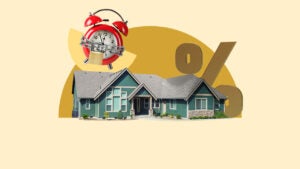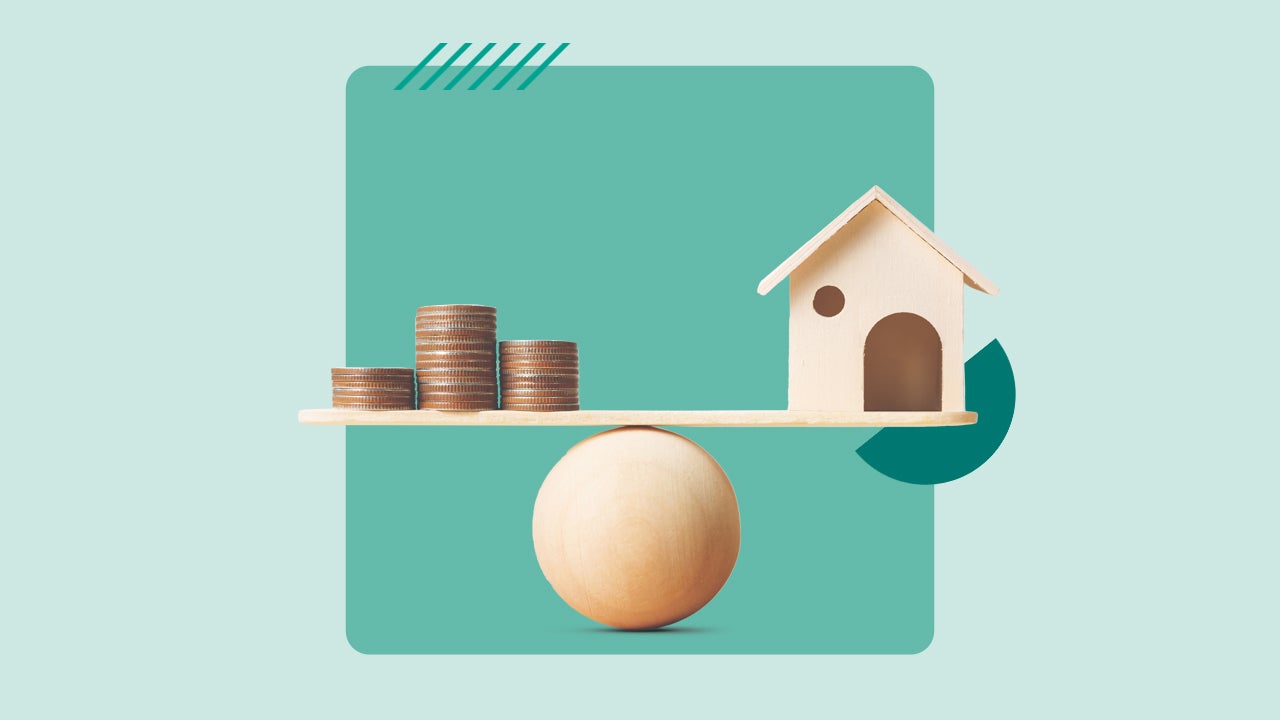Mortgage points: What are they and how do they work?




Key takeaways
- Mortgage points are upfront fees you can pay your mortgage lender in exchange for a lower interest rate.
- Typically, one point costs 1 percent of the amount you borrow and reduces your interest rate by 0.25 percent.
- If you’re not sure if you should buy points, calculate the breakeven timeline: how long it’ll take the interest savings to outweigh the cost of points.
When purchasing a home, there are many factors to consider, including the type of mortgage you want, the interest rate you’ll pay and whether you should buy points to lower it. Here’s more on how points work, including the benefits and drawbacks and how to calculate the breakeven point.
What are mortgage points?
Mortgage points are the fees a borrower pays a mortgage lender to get a lower interest rate on their loan. This lowers the overall amount of interest paid over the mortgage term. This practice is often referred to as “buying down the interest rate” or a “buydown.”
Each point the borrower buys costs 1 percent of the mortgage amount. One point on a $400,000 mortgage would cost $4,000, for example.
In effect, mortgage points are a type of prepaid interest. By buying points, you reduce the interest rate of your loan, typically by 0.25 percent per point. You can often buy a fraction of a point or up to as many as three whole points — sometimes even more. By reducing the loan’s interest rate, you can lower your monthly payment and the interest you’ll pay over time.
Keep in mind: The longer you plan to live in a home, the more potential benefit you’ll get from paying for points.
Discount points vs. origination points
Don’t confuse mortgage points that lower your interest rate — also known as “discount points” — with origination points. An origination point doesn’t affect the interest rate on your mortgage; rather, it’s a required fee the lender charges to create, process and underwrite the loan.
One origination point typically equals 1 percent of the total mortgage. Similar to discount points, you’ll pay origination points as part of your closing costs.
Not all lenders charge origination points. Some lenders allow borrowers to get a loan with no or reduced closing costs or origination points. They often compensate for that with a higher interest rate or other fees, however.
How do mortgage points work?
Each mortgage discount point typically lowers your loan’s interest rate by 0.25 percent. One point would lower a mortgage rate of 6.5 percent to 6.25 percent for the life of the loan, for example.
How much each point lowers the rate varies among lenders, however. The rate-reducing power also depends on the type of mortgage loan and the overall interest rate environment. When you explore buying points, ask your loan officer for specifics.
You can buy more than one point, and even fractions of a point. A half-point on a $400,000 mortgage, for example, would cost $2,000 and lower the mortgage rate by about 0.125 percent.
You’ll pay for the points at closing, and they’re listed on the loan estimate document, which you’ll receive within three business days of applying for a mortgage, and the closing disclosure, which you’ll receive at least three business days before closing the loan.
When you buy discount points on a mortgage, you’re locking in a lower rate permanently, for as long as you have the loan. In some cases, a lender might also offer a temporary buydown, a type of promotion that lowers your interest rate for a period of time. Unlike a permanent buydown, the borrower typically doesn’t pay for the temporary buydown — it’s usually covered by the lender, the builder if buying a new home or some other interested party. One of the most common temporary buydowns is a 3-2-1: a 3 percent lower rate for the first year of the loan, followed by a 2 percent lower rate for the second year of the loan, then a 1 percent lower rate for the third year of the loan. After that, the borrower pays the full interest rate for the remainder of the loan term.
How much can you save by paying mortgage points?
If you can afford to buy discount points on top of the down payment and closing costs, you’ll lower your monthly mortgage payments and could save lots of money. The key is staying in the home long enough to recoup the prepaid interest. If you sell the home after only a few years, or refinance the mortgage or pay it off, buying discount points could lose you money.
Here’s an example of how discount points can reduce costs on a $400,000, 30-year, fixed-rate mortgage:
| Without points | With 1 point | With 2 points | |
|---|---|---|---|
| Interest rate | 7.0% | 6.75% | 6.5% |
| Cost of points | $0 | $4,000 | $8,000 |
| Monthly payment (principal and interest) | $2,661 | $2,594 | $2,528 |
| Total interest paid | $558,036 | $533,981 | $510,178 |
| Total interest savings | $0 | $24,055 | $47,858 |
In this example, the borrower bought two discount points costing 1 percent of the loan principal, or $4,000 each. By buying two points for $8,000 upfront, the borrower’s interest rate shrank to 6.5 percent, lowering their monthly payment by $133, and saving them $47,858 in interest over the life of the loan. (Note that to save that full amount, the borrower would have to live in the home for the full term of the loan — 30 years — and never refinance.)
How to calculate the breakeven point
To calculate the “breakeven point” at which you’d recover your outlay on the prepaid interest, divide the cost of the mortgage points by the amount the reduced rate saves each month. Here’s an example:
$4,000 / $133 = 30 months
This shows that our borrower would have to stay in the home for about 30 months, or two-and-a-half years, to recover the cost of the points.
You can use Bankrate’s mortgage points calculator and amortization calculator to figure out whether buying mortgage points will save you money.
Pros and cons of mortgage points
Mortgage points offer both benefits and drawbacks:
Pros of mortgage points
- Lower interest rate: By purchasing mortgage points, you’re lowering the interest rate on your loan, which translates to lower monthly payments and less total interest paid over the loan term.
- Tax deduction: If you itemize your tax deductions, you could deduct the cost of points.
Cons of mortgage points
- Upfront cost: You’ll have to pay for points upfront at closing. This increases the initial cost of your mortgage.
- Might not always save you money: The benefits of mortgage points only kick in after the savings from the lower interest rate surpass the cost of the points — known as the breakeven point. If you sell or refinance your home before this point, you won’t realize the financial benefit.
Should you buy down your interest rate with points?
I’m ambivalent about paying points — it strikes me as a lot of extra analysis without a big reward.— Jeff Ostrowski, Principal Writer, Bankrate
When you receive your mortgage loan offer, first clarify whether the stated quote requires you to pay points. If you can’t get that rate without paying points, you might want to ask for another quote that doesn’t require points. You can then compare the differences in rate.
For some, however, that exercise might not be worth their time, nor the relatively small amount of monthly savings.
“I’m ambivalent about paying points — it strikes me as a lot of extra analysis without a big reward,” says Jeff Ostrowski, principal writer for Bankrate. “But, if it’s very important to you to lower the rate over the life of your loan, and you have cash on hand to make it work, go ahead. Just make sure you’ll keep the mortgage long enough to recoup the upfront costs.”
That said, buying mortgage points might make sense in a few cases:
- If you plan to be in the home for a long time: Because buying points on mortgages reduces the rate for the life of the loan, every dollar you spend on points goes further the longer you pay that mortgage. As a result, if you plan to be in the house for years to come, the amount you’ll save is likely to make the upfront cost worth it.
- If you don’t plan to refinance any time soon: Generally, it’s not worth paying for points for a lower rate if you plan to refinance to a different rate before the breakeven point. If you know you’ll keep the mortgage for a long time, then points could still help you save.
The bottom line: If you’re not sure whether you should buy down your rate with points, do the math. It might make more financial sense to use the money you’d spend on points to make a bigger down payment, which would reduce the amount you’d need to borrow.
FAQ on mortgage points
-
Mortgage rates remain elevated, which might make mortgage points seem more attractive. However, the typical breakeven point now is five-plus years. If you don’t plan to stay in your home or keep your mortgage that long, it’s likely not worth buying points.
-
Whether you find a rate on a mortgage lender’s website or through a third party, the annual percentage rate, or APR, you see advertised might or might not include points. One rate might even seem attractively low, but that could be due to points already factored in that you might not want to pay. Be sure to read the fine print.
-
If you itemize tax deductions, you can deduct mortgage points as part of the mortgage interest deduction. These are tax-deductible on up to $750,000 of mortgage debt for homeowners who bought property after Dec. 15, 2017, or up to $1 million for those who purchased before that date. Origination points are not tax-deductible.
-
With an ARM, buying mortgage points only lowers the rate on the initial fixed-rate period of the loan, usually three, five, seven or 10 years. Because of this limited time frame, it’s not very common to buy points on an ARM.




